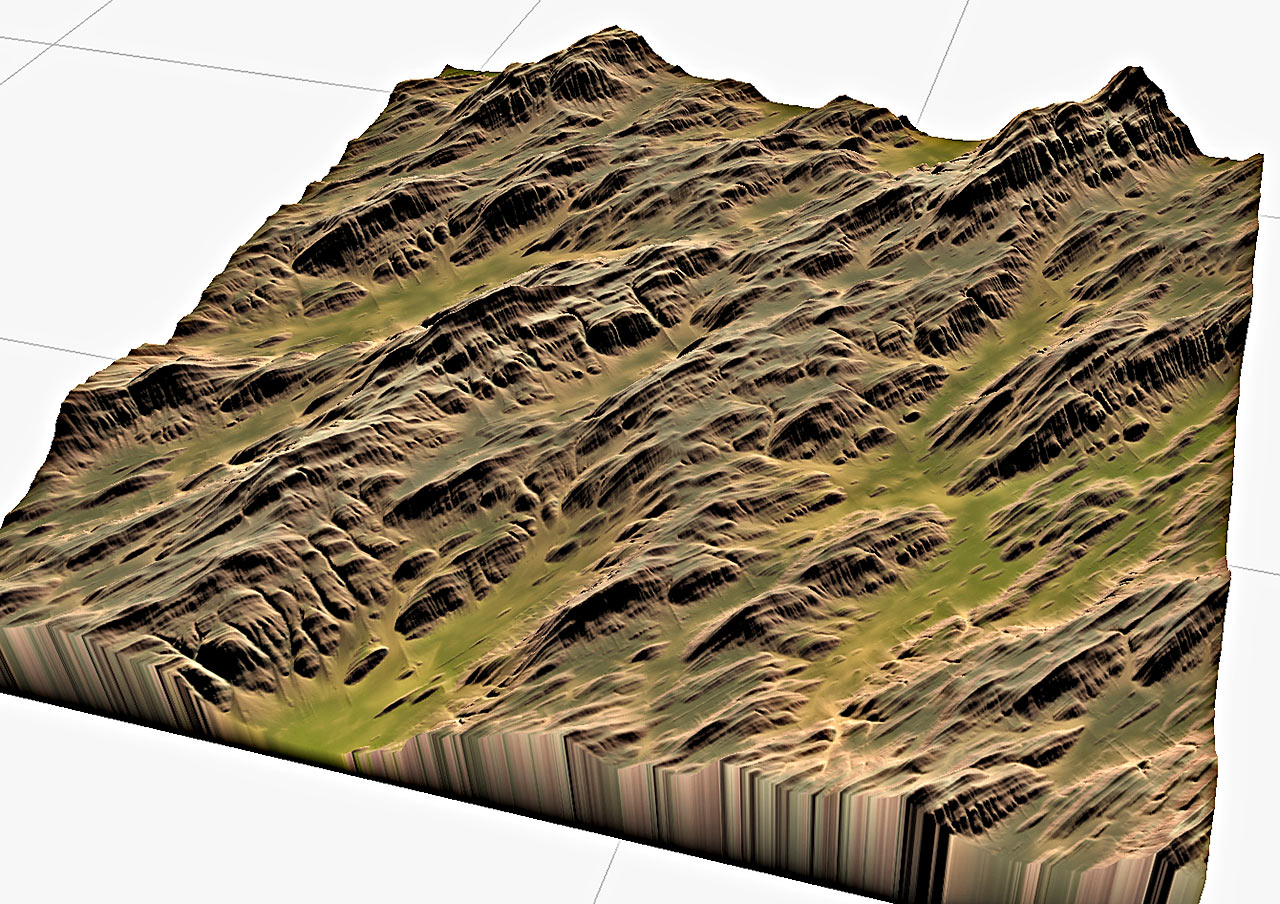As I mentioned in my last post, I’m currently doing a pass through the Instance Scatter device, making sure that it works as intended before release.
Why Fractal Distribution Rocks
Someone asked me in email what I meant about the placement device accepting a height object as a fractal basis function. Here’s a great example to illustrate:
We’re going to take this linear gradient and circular alpha mask:

And use the Instance Scatter device with its fractal distribution turned on (persistence : .5, lacunarity: .5, octaves: 8) to produce this:

When you get to examine this yourself in the next release, you’ll see it has all kinds of interesting features reminiscent of a tilted sedimentary type terrain.
This is a super quick example with pretty basic inputs, but it shows how the scatter device is useful for so much more than just placing craters and volcanos.
Here’s one more, which is just slightly modified from the above:

To be honest, I didn’t plan this custom-fractal ability originally; but once the idea to allow fractal distribution happened, it emerged. You’ll find yourself creating all kinds of interesting rock types and textures using the scatter device. Another nice perk is that these fractals are stable across space, and thus are fully tile-able and explore-able.
I fully expect to see lots of user-created custom terrain type macros grow out of this!
Very Soon…
3 replies on “More Reasons to be Excited about the Scatter Device”
Wow great!
Show more! 😀
Good god, that does look extremely versatile! Can’t wait.
Really amazing!!!
I just saw this, it could be an interesting add to WM 🙂
http://www.codeproject.com/Articles/785084/A-generic-lattice-noise-algorithm-an-evolution-of